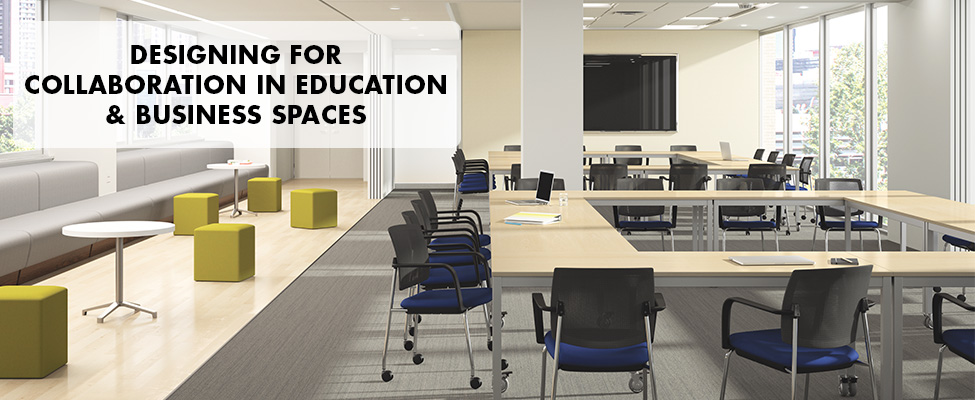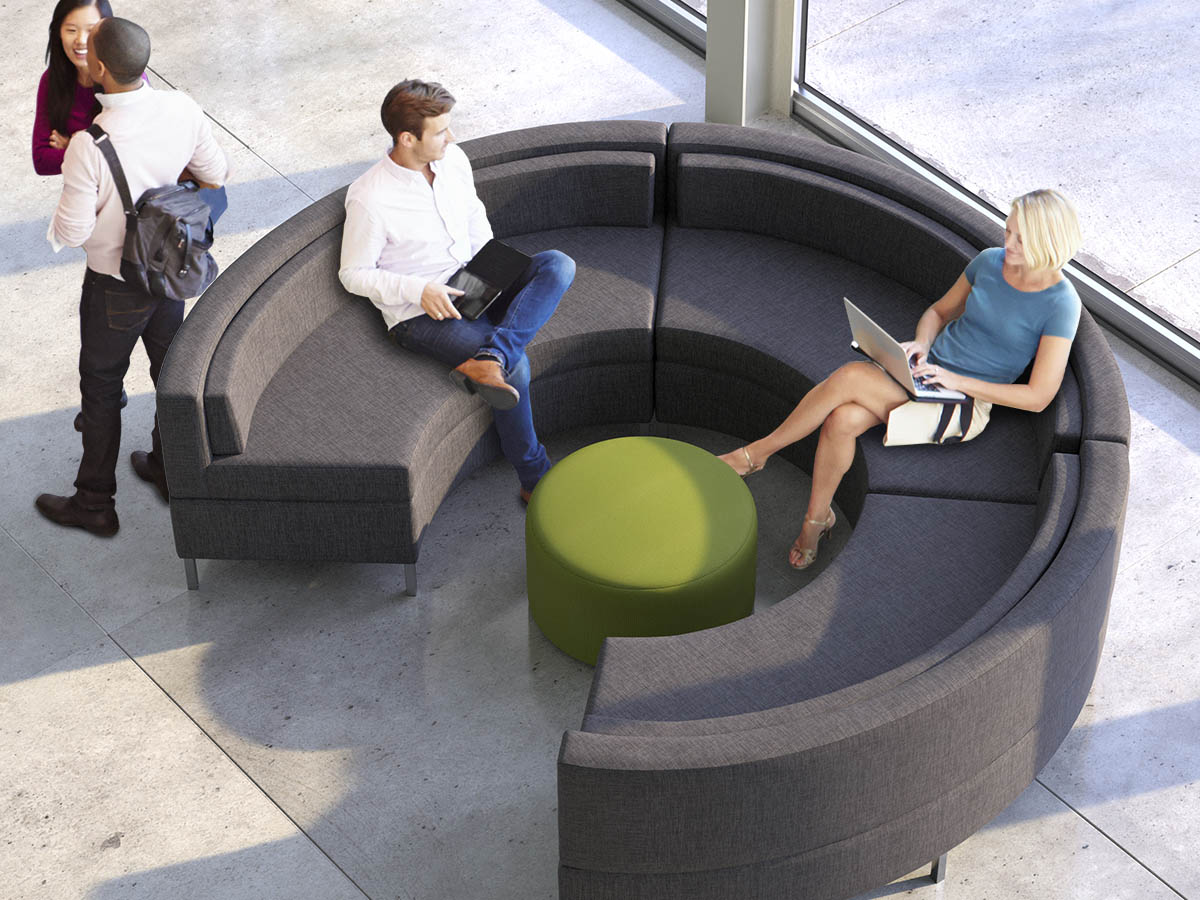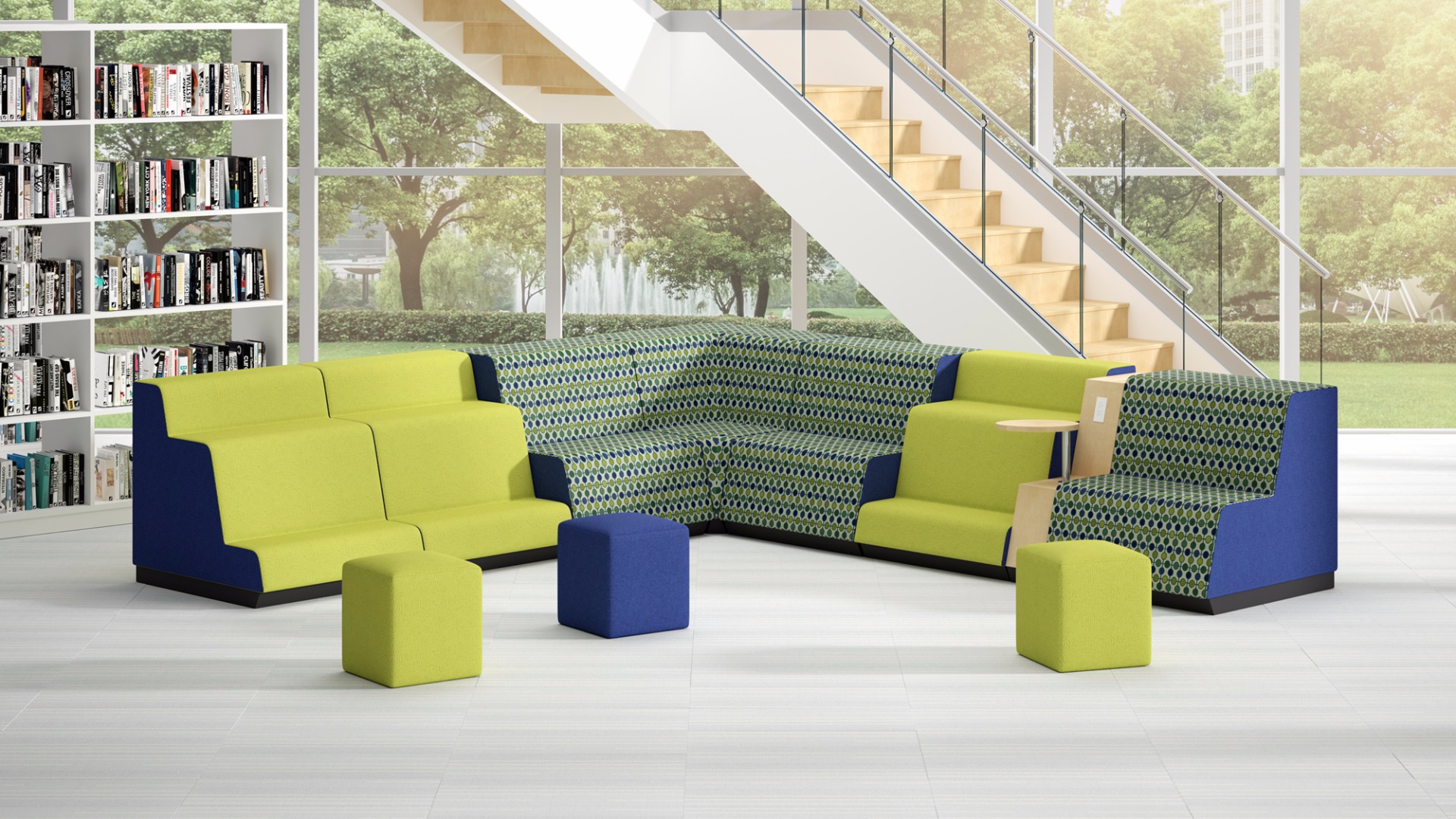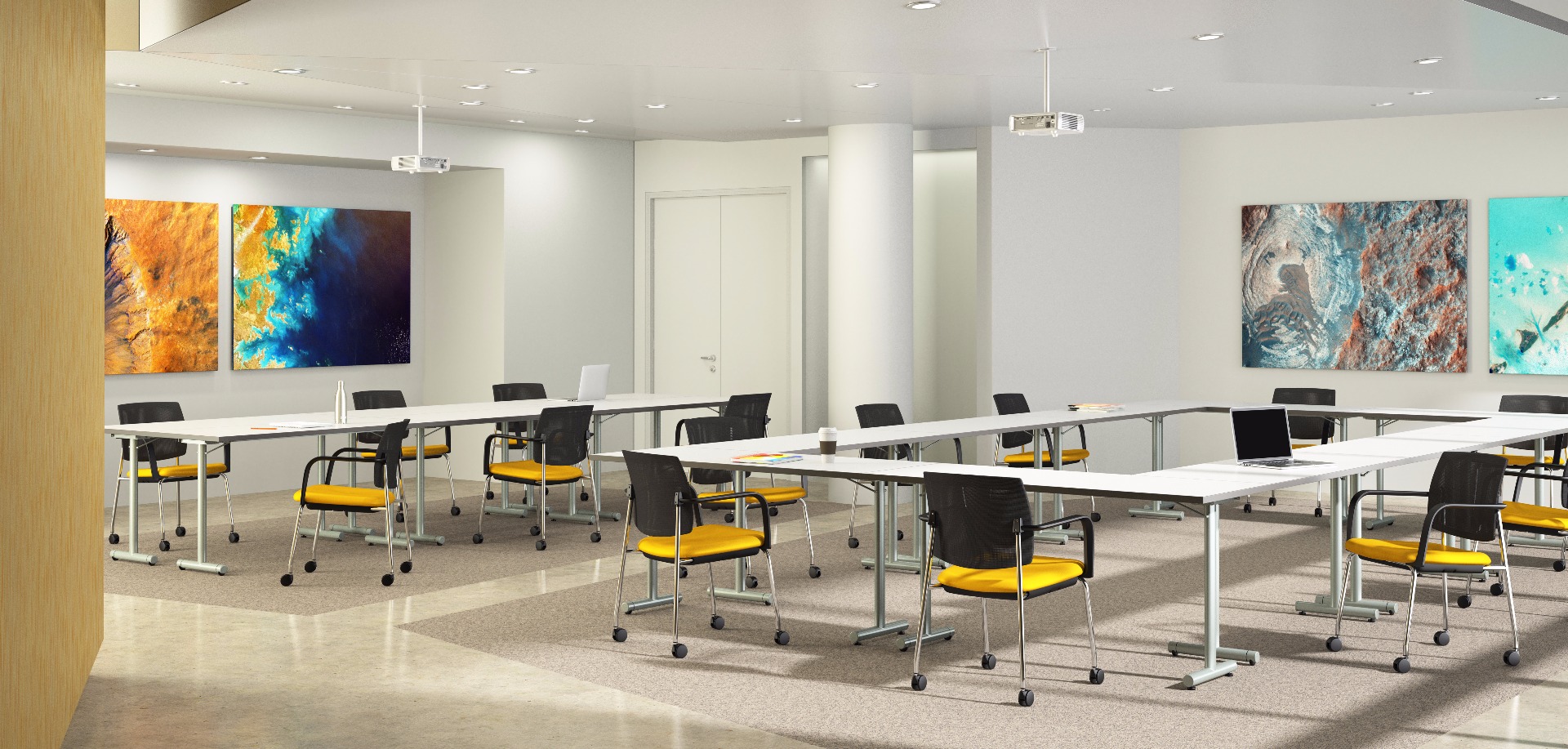
Designing for Collaboration in Education and Business Spaces
In recent years, new methods of teaching and learning have gradually started to replace the traditional approach where students sat in neatly arranged rows of rigid desks, listened to an instructor, took notes, and did their work.
Classrooms now are more likely to feature movable, comfortable seating arranged in semi-circles or other flexible configurations, digital technologies such as tablets, laptops, and smartboards, and faculty who move around the space to engage with students rather than talk at them. In short, a much more collaborative learning environment that’s designed to prepare students for the collaborative working environment they’ll be a part of in the knowledge-based, service-oriented economy.
So, what does that look like for employers? They expect students to enter the workforce with certain traits for today’s job market such as problem-solving skills, the ability to both work with a team and be self-guided, strong interpersonal communication skills, and multi-tasking capabilities. And employees? They want an environment that makes it easy for them to share ideas and collaborate with colleagues in any number of non-traditional settings such as hallways, touchdown spaces, or cafeterias. And, because technology makes it so easy, employees often work remotely yet still want to engage effectively with their co-workers.
Based on these dynamics, it’s easy to see why the layout of classrooms needed to change. Space is being redesigned to support collaboration among students and with their instructors—and furniture plays an essential role. Modular furniture, tables on wheels, and seating with various posture options all help students engage with each other in the classroom.

And just like employees are increasingly working outside the traditional office environment, students are doing much of their work outside the classroom. For example, learning commons, which are active, comfortable, technology-oriented spaces where students can learn, create, meet, collaborate, and much more, are replacing or becoming a part of most academic libraries.
These spaces, along with areas such as residence halls, student life centers, and cafeterias, support students’ interest in being able to learn, study and socialize anytime, anywhere. Booth seating, tables with built-in power capabilities, and standing-height tables are just a few of the furniture solutions that are ideal for these environments.
As collaboration continues to become an increasingly important corporate value for many companies, educational facilities will continue to set the stage by designing classrooms and other environments that inspire and foster collaboration. The right furniture can help bring that collaborative design to life.
